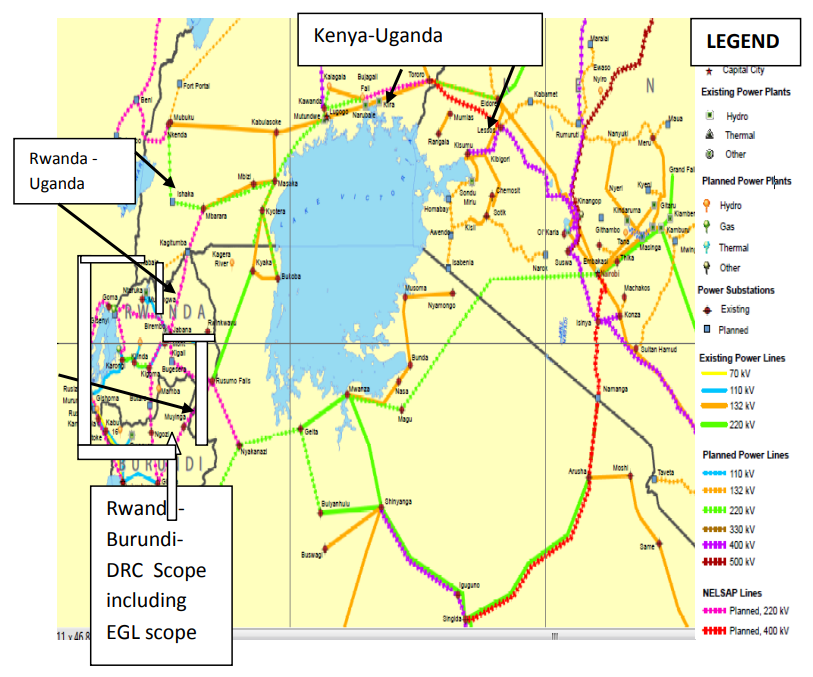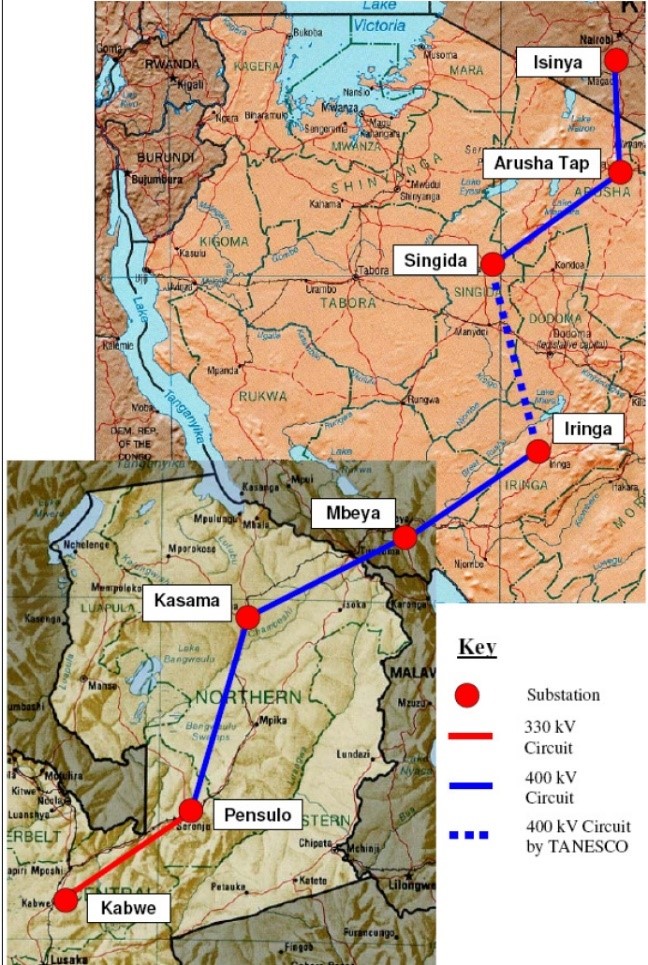Access to electricity is a priority for the Nile Basin region’s economies because it is a prerequisite to poverty reduction and economic growth. Apart from the Eastern Nile countries, which average 64% access, most Nile Equatorial Lakes countries have very low access to electricity, with an average of 33% (International Energy Agency, 2019). Industrial and domestic consumers often experience erratic supply, mostly due to high demand compared to the available power. In order to bridge this gap, NBI is implementing power projects to enhance commitment to regional integration of the countries’ electricity grids. An integrated NEL/East Africa power market holds the promise of increasing access, improving reliability, and reducing the costs of power supply to each Member State. NBI, through the Nile Equatorial Lakes Subsidiary Action Programme (NELSAP), developed the “Interconnection of Electric Grids of the Nile Equatorial Lakes Countries Project’ to improve the living conditions of the NEL communities and their quality through increased availability of affordable energy.
What is a power interconnection?
Electricity interconnectors are high-voltage cables that connect the electricity systems of neighbouring countries. They facilitate cross border cost effective power and energy trading.
A feasibility study is an assessment of the practicality of a proposed project. It serves to answer three basic concerns about a proposed project. One, is the technical feasibility of the project. Secondly, it should be financially and economically viable. Lastly, th...
Feasibility Study
A feasibility study is an assessment of the practicality of a proposed project. It serves to answer three basic concerns about a proposed project. One, is the technical feasibility of the project. Secondly, it should be financially and economically viable. Lastly, the proposed project should be environmentally and socially acceptable.
This 260km transmission line runs from Uganda to Kenya. On the Kenyan side, this Overhead Transmission Line (OHTL) is 50% done while the Ugandan side (Tororo-Bujagali) has achieved 88% completion. This interconnection is expected to lead to increased power supply all...
Bujagali-Tororo-Lessos
This 260km transmission line runs from Uganda to Kenya. On the Kenyan side, this Overhead Transmission Line (OHTL) is 50% done while the Ugandan side (Tororo-Bujagali) has achieved 88% completion. This interconnection is expected to lead to increased power supply allowing for the transfer of about 150-300MW. It is expected to facilitate the trade of power with Burundi, DR Congo, Rwanda as well as Uganda.
The Mbarara-Mirama-Shango power line measures a distance of 172km from Uganda to Rwanda. Construction of the Overhead Transmission Lines (OHTL) are complete and is awaiting commissioning. On the Uganda side, construction of both the line and the Mbarara sub-station a...
Mbarara-Mirama-Shango
The Mbarara-Mirama-Shango power line measures a distance of 172km from Uganda to Rwanda. Construction of the Overhead Transmission Lines (OHTL) are complete and is awaiting commissioning. On the Uganda side, construction of both the line and the Mbarara sub-station are complete and all facilities for interconnection with Rwanda are ready and the line has been energised up to the Rwanda border. NELSAP-CU, together with the East African Power Pool (EAPP), with support from USAID, are working on modalities of preparation for a coordinated and smooth synchronised operation.
The transmission line from the Democratic Republic of Congo (DRC) to Rwanda measures a distance of 293km. This is an extension of the original completed Goma-Gisenyi line. The transmission line is composed of the 95-km-long, 220 kV Goma–Bukavu line and Buhandahanda s...
Buhandahanda-Goma-Gisenyi-Kibuye-Shango
The transmission line from the Democratic Republic of Congo (DRC) to Rwanda measures a distance of 293km. This is an extension of the original completed Goma-Gisenyi line. The transmission line is composed of the 95-km-long, 220 kV Goma–Bukavu line and Buhandahanda sub-station in the DR Congo as well as the completed 12 km 220 kV Goma–Gisenyi line and ongoing construction of Goma sub-station.
This is a 78.8 km power transmission line, running from the DR Congo to Burundi, whose construction is 20% complete. It includes two sub-stations, Kamanyola sub-station and Bujumbura sub-station. Upon completion, the project will integrate the electricity grids of th...
Kamanyola-Bujumbura
This is a 78.8 km power transmission line, running from the DR Congo to Burundi, whose construction is 20% complete. It includes two sub-stations, Kamanyola sub-station and Bujumbura sub-station. Upon completion, the project will integrate the electricity grids of the Great Lakes countries including Burundi, DRC and Rwanda as well as the regional electricity grid for the five NEL countries. The project is also expected to promote regional cooperation and integration promoting power development planning from a regional perspective.


